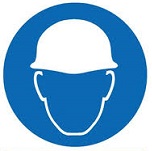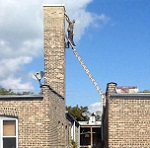 Measures relating to the use of head protection on construction sites are among a raft of changes to health and safety legislation which came into force on 6 April, subject to Parliamentary Approval. The Health and Safety (Miscellaneous Repeals, Revocations and Amendments) Regulations 2013 repeal one Act and revoke 12 instruments, plus a related provision in the Factories Act 1961. The measures are being removed because they have either been overtaken by more up-to-date regulations, are redundant or do not deliver the intended benefits.
Measures relating to the use of head protection on construction sites are among a raft of changes to health and safety legislation which came into force on 6 April, subject to Parliamentary Approval. The Health and Safety (Miscellaneous Repeals, Revocations and Amendments) Regulations 2013 repeal one Act and revoke 12 instruments, plus a related provision in the Factories Act 1961. The measures are being removed because they have either been overtaken by more up-to-date regulations, are redundant or do not deliver the intended benefits.
According to the Health and Safety Executive (HSE): "These changes do not compromise essential health and safety protections. The aim is to make the legislative framework simpler and clearer. This work is part of wider reforms to help employers understand quickly and easily what they need to do to manage workplace risks."
Action being taken to raise awareness of the changes will involve site safety experts from HSE working with the construction industry – in particular small contractors – to ensure that it understands the continuing need for employers to provide hard hats and ensure they are worn on construction sites.
"Hard hats remain vital in protecting construction workers from head injuries," says the HSE in its announcement regarding the changes. "Employers will need to comply with the requirements of the Personal Protective Equipment Regulations 1992, which have been amended so that they cover the provision and use of head protection on construction sites, thus maintaining the level of legal protection when the Construction (Head Protection) Regulations are revoked."



 A case brought against construction giant Carillion in the so-called ‘blacklisting’ affair will be subject to a full two-day hearing in front of a High Court judge, it has been decided.
A case brought against construction giant Carillion in the so-called ‘blacklisting’ affair will be subject to a full two-day hearing in front of a High Court judge, it has been decided. Construction and engineering law specialists Trowers & Hamlins has announced that its national head of projects and construction, Dr David Mosey, has been offered a Chair of Law at King's College, London, as director of its Centre of Construction Law and Dispute Resolution.
Construction and engineering law specialists Trowers & Hamlins has announced that its national head of projects and construction, Dr David Mosey, has been offered a Chair of Law at King's College, London, as director of its Centre of Construction Law and Dispute Resolution. After three months of picture submissions and voting, the Ladder Association's Idiots on Ladders campaign has discovered the biggest 'ladder idiot' in the UK. Beginning on 1 September, the association welcomed submissions from the public of the worst uses of ladders they could find. The competition, which aimed to shame dangerous ladder users into changing their ways, then offered people the chance to vote on Facebook to decide which picture was the worst.
After three months of picture submissions and voting, the Ladder Association's Idiots on Ladders campaign has discovered the biggest 'ladder idiot' in the UK. Beginning on 1 September, the association welcomed submissions from the public of the worst uses of ladders they could find. The competition, which aimed to shame dangerous ladder users into changing their ways, then offered people the chance to vote on Facebook to decide which picture was the worst.